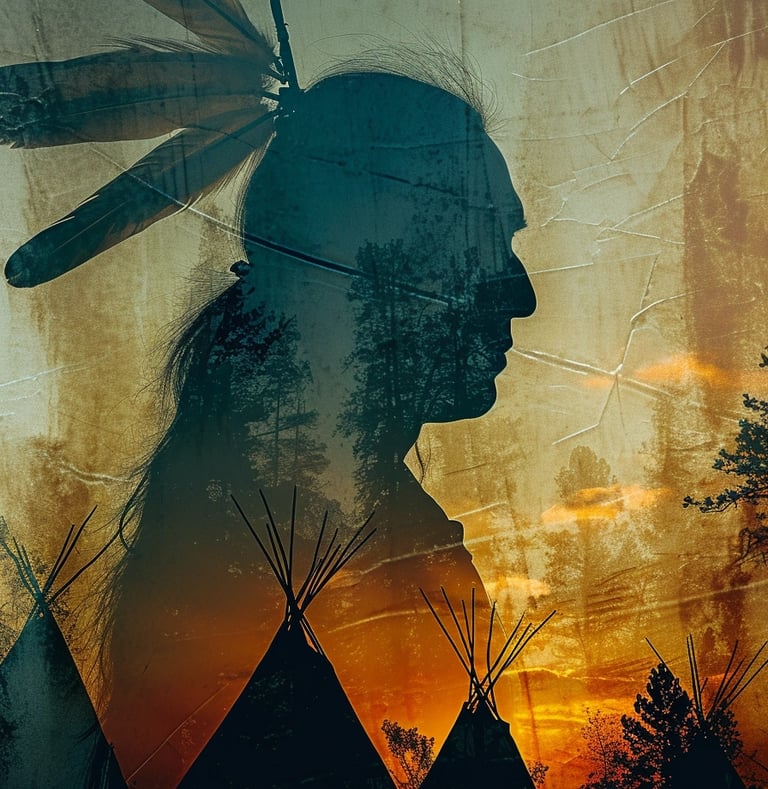Indigenous America
A Glimpse into the Rich Tapestry of Native American Tribes
NATIVE AMERICAN HISTORY
12/21/20231 min read
The history of Native American tribes in North America is a tapestry woven with diverse cultures, languages, and traditions. With a heritage that spans thousands of years, these indigenous peoples have left an indelible mark on the continent. In this brief exploration, we'll highlight a few of the many Native American tribes, each contributing a unique thread to the rich fabric of their collective history.
Navajo Nation: Nestled in the southwestern United States, the Navajo Nation is the largest federally recognized tribe, known for their breathtaking landscapes, intricate artistry, and the Navajo Code Talkers who played a crucial role in World War II. Their traditions are deeply rooted in harmony with nature, reflected in their vibrant ceremonies and spiritual practices.
Cherokee Nation: The Cherokee, hailing from the Southeastern United States, boast a rich cultural heritage. Despite the challenges posed by the Trail of Tears in the 19th century, the Cherokee Nation has endured, preserving their language and customs. Today, they contribute significantly to art, literature, and activism.
Sioux Tribes: Comprising three major divisions – Dakota, Nakota, and Lakota – the Sioux people are known for their nomadic lifestyle across the Great Plains. The Battle of Little Bighorn, where the Lakota and their allies achieved a historic victory, stands as a testament to their resilience and warrior spirit.
Hopi Tribe: The Hopi, residing in the arid landscapes of the southwestern United States, are renowned for their Katsina dolls, intricate pottery, and deeply spiritual ceremonies. Their commitment to sustainable living and agricultural practices is reflected in their ancient villages perched atop mesas.
Iroquois Confederacy: Also known as the Haudenosaunee, the Iroquois Confederacy is a league of six tribes – Mohawk, Oneida, Onondaga, Cayuga, Seneca, and Tuscarora. Their Great Law of Peace, which influenced the drafting of the United States Constitution, underscores their commitment to unity, equality, and justice.
The Native American tribes mentioned here represent just a fraction of the vibrant mosaic that makes up the indigenous peoples of North America. Each tribe has its own unique traditions, languages, and contributions to art, culture, and history. Acknowledging and honoring the diversity of Native American tribes is essential in fostering a deeper understanding and appreciation for the enduring legacy they continue to weave into the fabric of our shared heritage.


Copyright 2025 Tribal Spirits Art


